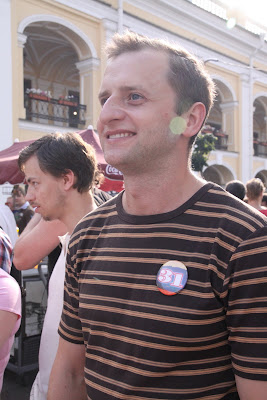"Fisherman's Blues' music is an expression of our journey from rock to roots." - Mike ScottWhen Fisherman's Blues was released in the fall of 1988, I'd just returned from my own journey - a busking trip across Europe where I'd morphed into a member of Ewan MacColl's dreaded "folk police."
 The only music I would listen to had its roots in the era of the "Last Spike" and I rejected anything that sounded like it came from my own century.
The only music I would listen to had its roots in the era of the "Last Spike" and I rejected anything that sounded like it came from my own century.  Fisherman's Blues changed all that. By 1986, Mike Scott and The Waterboys were moving away from the studious intensity and grand themes that had characterized much of The Waterboy's 1985 album, This Is The Sea. Scott was reaching deeper for more warmth and intimacy. These years 1986-1988 were pivotal for him, as they were for me. We were digging into the roots, uncovering the hillbilly bards – Woody Guthrie, Hank Williams, Robert Johnson and the wild Celtic keepers of the Irish & Scottish traditions.
Fisherman's Blues changed all that. By 1986, Mike Scott and The Waterboys were moving away from the studious intensity and grand themes that had characterized much of The Waterboy's 1985 album, This Is The Sea. Scott was reaching deeper for more warmth and intimacy. These years 1986-1988 were pivotal for him, as they were for me. We were digging into the roots, uncovering the hillbilly bards – Woody Guthrie, Hank Williams, Robert Johnson and the wild Celtic keepers of the Irish & Scottish traditions. In contrast to This Is The Sea, the destination for Fisherman's Blues is unknown: this time, it was all about the journey. A new mood had also taken over - the blues. Scott realized his ship had run aground, that he hadn’t obtained the kind of fulfillment promised in This Is The Sea.
In contrast to This Is The Sea, the destination for Fisherman's Blues is unknown: this time, it was all about the journey. A new mood had also taken over - the blues. Scott realized his ship had run aground, that he hadn’t obtained the kind of fulfillment promised in This Is The Sea.  The interplay of Steve Wickham's incendiary fiddle and Scott’s impassioned vocals recalls Howlin’ Wolf and his legendary guitarist, Hubert Sumlin. Wickham’s intense licks on "We Will Not Be Lovers" rip as deeply as Sumlin's on “Wang Dang Doodle.” (Check out the 3:50 mark for some truly nasty bow work!)
The interplay of Steve Wickham's incendiary fiddle and Scott’s impassioned vocals recalls Howlin’ Wolf and his legendary guitarist, Hubert Sumlin. Wickham’s intense licks on "We Will Not Be Lovers" rip as deeply as Sumlin's on “Wang Dang Doodle.” (Check out the 3:50 mark for some truly nasty bow work!)Fisherman's Blues was as dramatic a change as Dylan going electric, but this time Orpheus was unplugging. As with Dylan’s change of direction, Scott also alienated a huge section of his fan base. To some he appeared to have forsaken “The Big Music” for kitchen pots and fiddles. What these naysayers failed to grasp was Scott’s protean ability to transfer the power of This Is The Sea into new organic forms...


















.jpg)



























